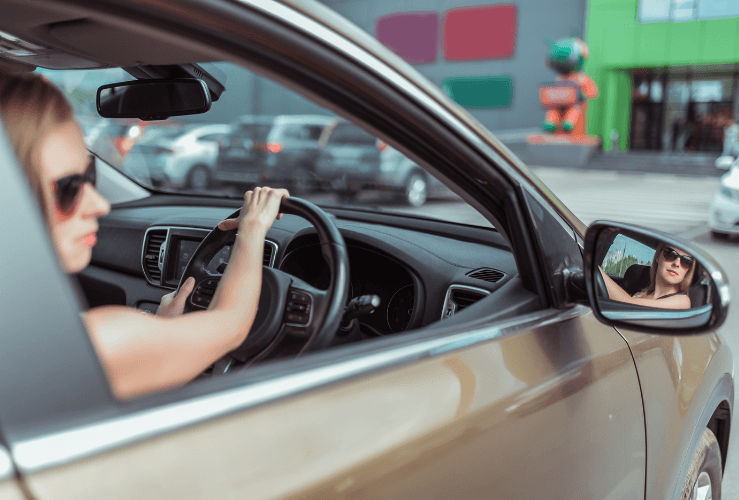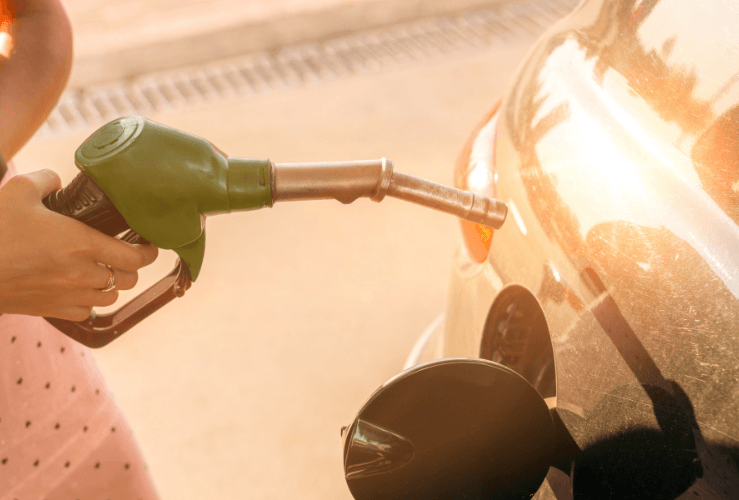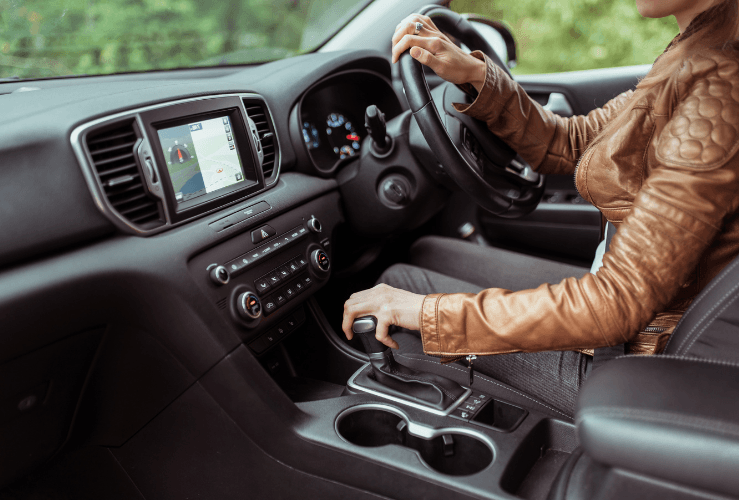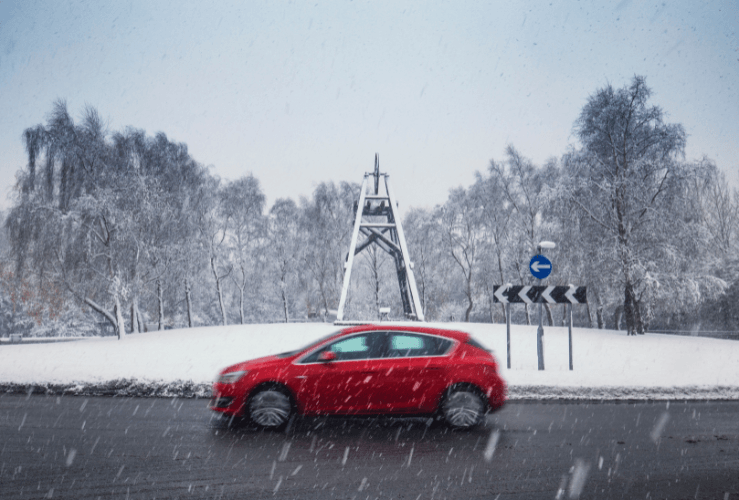If you've recently passed your driving test, you should have a good understanding of how to drive a vehicle safely in most situations.
However, being a new driver is still a learning process; you're sure to improve your skills and understanding of the road as time goes on.
To support you on your journey, in this article we'll discuss some basic driving tips for new drivers, covering how to use your car, manoeuvre safely, and listening for potential dangers.

Steering column lock
Your car features a steering column lock to reduce the chances of theft.
Normally, this releases automatically when you turn on the ignition. If the key won't turn, the steering lock is preventing it from doing so.
To remedy this, simply turn the steering wheel left or right at the same time as twisting the key. This will release the steering lock, and you'll be able to start the car.
Colour-coded dashboard icons
Your car's dashboard icons are colour-coded like traffic lights: red, amber and green.
Any green icon - such as dipped headlamps or indicators - are fine to drive with.
Lit amber icons tell you there are issues to be aware of - such as a minor engine problem or a rear fog light issue. But you can still drive with amber icons lit.
However, if any red icons are illuminated, you should stop driving immediately, because your vehicle has a serious fault like low engine oil pressure or a brake issue.
This traffic light system means we know whether we can drive or not, even if we don't know what each icon means.
The only icon that falls outside the traffic light system is the main headlights, which is indicated by a blue icon.
Listening for hazards
On some roads and streets in built-up areas, you'll find merging into another road difficult because your view is obstructed by buildings. When this happens, lower the window on the side of the car where a hazard may be coming from, and listen for an approaching vehicle.
In some situations you may need to lower both windows to hear properly. In this way, your hearing will help make up for the lack of visual information.
As you listen, move your car forward slowly and carefully, to get a better view. However you should never rely solely on audio cues when manoeuvring.
Use reflections to help spot hazards
Make use of reflections in the windows of buildings and parked cars to identify nearby hazards - such as pedestrians and other vehicles. This can be especially useful when driving at night, or when your view is limited by nearby obstacles.

Know which side your fuel cap is on
When pulling into a fuel station, it's better to pull up with your fuel cap adjacent to the pump. This way, you won't need to drape a potentially dirty fuel hose across your bodywork (although most hoses are long enough to reach).
On your dashboard will be a symbol comprising a fuel pump and an arrow - this reminds you on which side your fuel cap is. This is useful if you've just got a new car, or if you drive several cars.
Filling up with the right fuel
At the fuel pump you'll see a number of fuel options - usually unleaded, super unleaded and diesel.
If you fill up with the wrong fuel, you could seriously damage your engine.
Luckily, the different fuels are colour-coded: green for petrol and black for diesel. At some pumps you can buy higher-grade petrol - but unless your filler cap states this is required, there's no need to waste your money.
If you put diesel into a petrol engine, or vice versa, do not start your engine, call your breakdown provider for assistance.
Running your engine with the wrong fuel will cause a great deal of damage.
All Start Rescue breakdown policies include misfuel cover as standard.
Mirror dipping at night
Behind your rear-view mirror is a lever which angles the mirror downwards. This is useful at night if a car behind you has bright lights which are making it difficult to see the road ahead.
If your car doesn’t have such a lever, it is likely to have an automatic dimming system with a light sensor.
Angle of front wheels
It's not always easy to know what angle your wheels are facing while inside your car, parked up. You can work this out by moving your car a tiny bit, and seeing which way it goes.
It's better to be cautious and minimise the chances of damaging your car.

Reverse out of parking bays with care
When reversing out of a parking bay with cars on either side, it's important not to turn too early. If you do, you run the risk of scraping your car's nose against an adjacent vehicle - causing a lot of costly damage.
Instead, reverse in a straight line, and don’t begin turning until the door mirrors have passed the adjacent cars.
Other bay parking tips for new drivers include: ensuring the bay is large and wide enough for your vehicle, and ensuring you park within the painted lines.
You should also leave as wide a turning circle as possible when entering a parking bay, to reduce the chances of a scrape.
For more advice on avoiding scrapes to your car when using car parks, take a look at our blog on how to avoid car park bumps and scratches.
Steering when reversing
Do you get confused with which way to steer when reversing?
Simply remember that you just need to steer where you want to go.
Turning the steering wheel right will move the rear to the right, and vice versa.
Surprisingly, the 'steer where you want to go' rule applies when going forwards and backwards!

Slow down in bad weather
If heavy snow or rain is forecast, your best bet is to stay off the road. But if you do need to use your car, one of the most useful winter driving tips for new drivers is keep your speed down.
You should also increase the distance between yourself and other vehicles - by a factor of two. This gives you more distance to stop in ice, snow, or on wet roads.
Remember that vehicles with all-wheel-drive also need more distance to stop safely in slippery conditions (off-roaders will move off better in slippery conditions, but stopping is no quicker or easier than in a rear-wheel-drive car).
Be prepared for a breakdown or emergency
Ensure you have the contact details of your breakdown recovery provider handy, as well as your driver’s licence and insurance.
It’s also a good idea to keep a first aid kit, blanket, torch (ideally the wind-up type), jump cables, warning triangle, unspoilable food like energy bars, water, and smartphone in your vehicle.
In winter, also consider keeping the following with you: extra clothes, a small shovel for digging out of snow, de-icer and an ice scraper.
Remember that some countries - like France - require you to have a warning triangle in your car. This must be placed on the road surface at least 30 metres from an obstacle (e.g. your broken-down vehicle).
Summary
Every time you drive your car, you’re improving your skills and experience on the road.
As time goes on, you’ll feel able to take on greater driving challenges, such as long distance trips or driving in the countryside.




